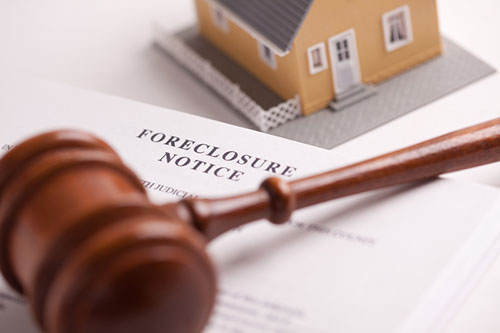Learn the basics about judicial and nonjudicial foreclosures.
The foreclosure process in any given state is generally classified as being either judicial or nonjudicial. The key difference between the two procedures is court involvement. (To learn which foreclosure procedure lenders in your state usually use, see Key Aspects of State Foreclosure Law: 50-State Chart.)
Judicial Foreclosures
All states allow a lender to foreclose judicially, but certain states require this process for residential properties.
How the foreclosure process works. In states that have a judicial foreclosure process, the lender must file a lawsuit to foreclose the property. The court will attempt to determine the circumstances surrounding the default through in-court hearings and documents filed by the homeowner and lender. The homeowner will also have the opportunity to try to negotiate a way to avoid foreclosure. If the court determines that the foreclosure is proper, and the homeowner isn’t successful in the negotiations to stop the foreclosure, the court will enter a judgment against the homeowner and a foreclosure sale will follow. (For details about the judicial foreclosure process, see How Judicial Foreclosure Works.)
How long a foreclosure takes. The judicial foreclosure process can be lengthy, frequently lasting several months—or years in some cases. (Learn about states with a long foreclosure timeline.)
Nonjudicial Foreclosures
In states that use a nonjudicial foreclosure process, the court system is minimally involved, if at all. In fact, a nonjudicial foreclosure is typically handled entirely out of court by a trustee, which the lender designates in the deed of trust that the borrower signs when buying the home. Or the lender might substitute a different trustee later on to handle the foreclosure.
In states that allow nonjudicial foreclosures, a lender might choose to foreclose through the courts. For example, if there’s a title problem that a court needs to sort out, the lender might choose to foreclosure judicially—even when state law permits nonjudicial foreclosures.
How the foreclosure process works. Nonjudicial foreclosure procedures differ widely from state to state. In some states, the trustee provides the homeowner with a notice of default that lets the homeowner know that the trustee intends to foreclose on the home. The homeowner is then given a period of time to get current on the loan or negotiate a way to prevent a foreclosure. The trustee might also have to send a notice with details about the sale. Depending on state law, though, the lender might:
- send only a notice of sale
- send a combined notice of default and sale, or
- state law might only require the lender to publish notice in a newspaper and post a notice somewhere on the property or somewhere public.
If the homeowner can’t cure the default or otherwise find a way to avoid foreclosure, the trustee sells the home at a foreclosure sale. (For details about nonjudicial foreclosures, see How Nonjudicial Foreclosures Work.)
How long a foreclosure takes. The nonjudicial foreclosure process is generally quicker and less expensive than the judicial process, often lasting just a few months or less. (To learn more about the timelines for judicial and nonjudicial foreclosures, see our articles Timeline for a Judicial Foreclosure and Timeline for a Nonjudicial Foreclosure.)
Talk to an Attorney
Foreclosure laws and procedures vary from state to state and, again, sometimes depend on the individual circumstances of the case. While the above descriptions provide general information about the two primary foreclosure processes, if you’re facing a foreclosure, you should become familiar with the specific laws and procedures in your state. Consulting with an attorney or a HUD-approved housing counselor is strongly recommended.
Also, be aware that that states sometimes have different laws and procedures if the property being foreclosed is a commercial property, multifamily home, timeshare, or undeveloped land, rather than a single-family residence.

